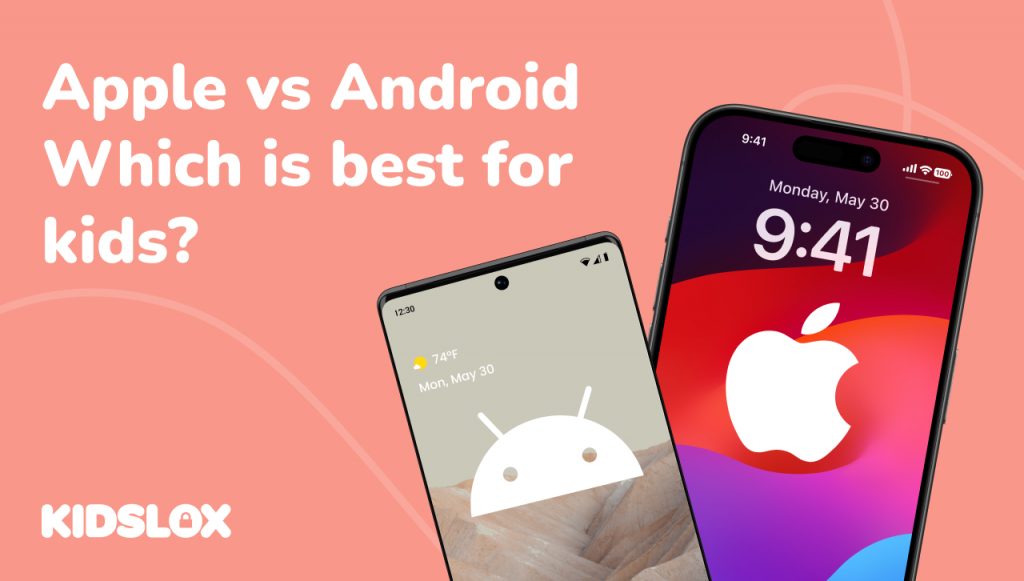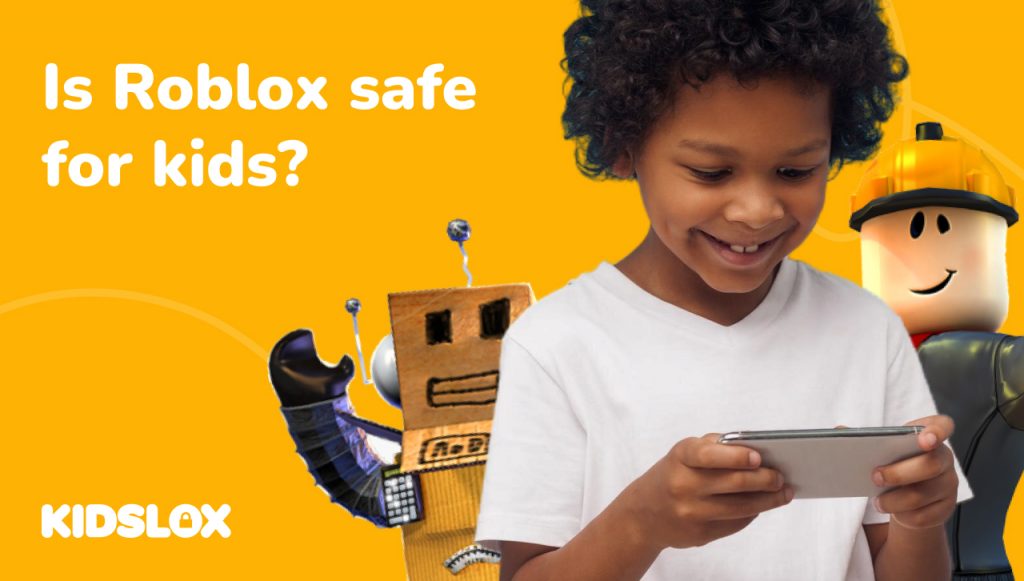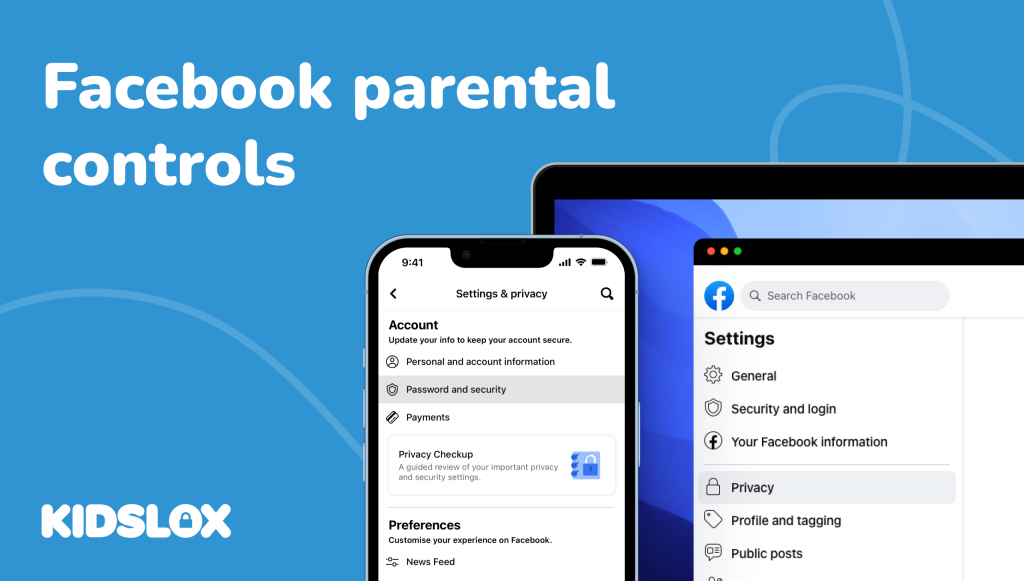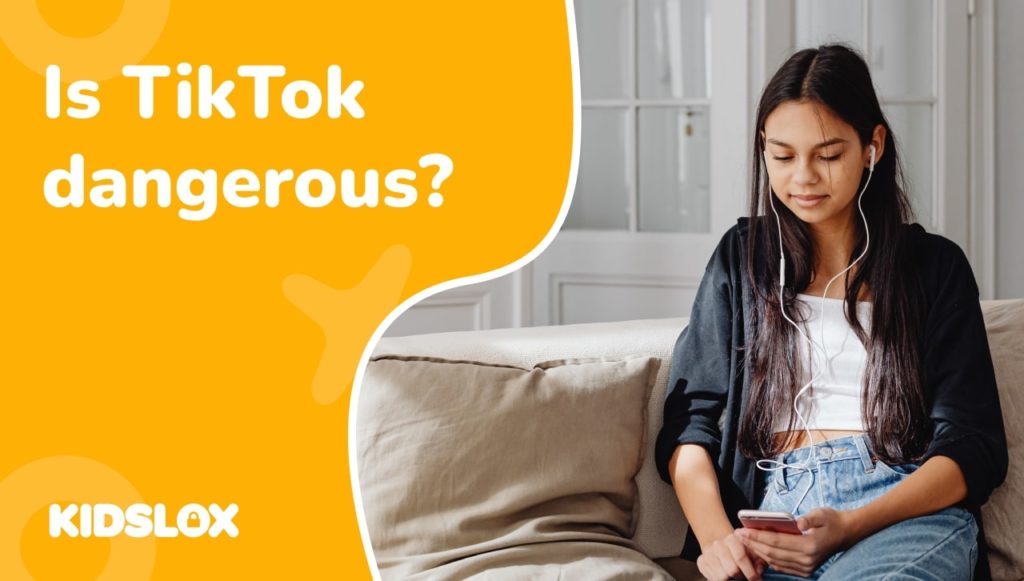As a parent, you may find yourself grappling with questions like, “At what age should I give my child a smartphone?” or “How much screen time is too much?”
Our families live in a digital-first world, and having devices is almost assumed for many children and teens. Throw in hanging out with friends and afterschool activities, and you may find it’s impossible to avoid the phone issue!
If you decide to get your child a phone – even just an emergency phone for unexpected situations – you’ll have to deal with a common challenge: which smartphone should you choose: iPhone or Android?
It’s been an eternal battle that iPhone and Android users have been raging for years, and passionate advocates are on both sides. However, when choosing a phone for your child, the decision becomes even more complex. It’s not just about personal preference or brand loyalty; it’s about finding a safe, secure, and age-appropriate device for your child’s needs.
Before diving into the pros and cons of iPhone vs Android for kids, it’s essential to take a step back and consider whether your child is ready for a smartphone at all. Then, let’s look at the pros and cons of each smartphone option – and which may be best for your child.
Why Get A Smartphone For Your Child?
Choosing to get a phone for your child or teen is highly personal – and like any big decision, there are plenty of reasons to consider. After all, the goal is to balance convenience and availability with safety and healthy digital habits.
Here are some of the most common reasons to get a smartphone for your child:
- Safety and communication: A smartphone allows your child to stay connected with you and other family members, especially in case of emergencies. With features like GPS tracking and emergency contact apps, you can have peace of mind knowing you can reach your child when needed.
- Educational opportunities: Smartphones provide access to many educational resources, including learning apps, e-books, and online courses. This can help support your child’s learning and development outside the classroom.
- Socialization and connection: Smartphones enable children to stay in touch with friends and family members, fostering a sense of connection and belonging. This can be particularly important for children with difficulty socializing in person or living far away from loved ones.
- Preparation for the future: As technology becomes increasingly integrated into our daily lives, developing digital literacy skills is crucial for future success. Introducing your child to smartphones at an appropriate age can help them learn to navigate the digital world responsibly.
There are also risks to consider:
- Excessive screen time: Without proper guidelines and limits, children may spend too much time on their smartphones, leading to potential issues like sleep disruption, poor posture, and a sedentary lifestyle.
- Online safety concerns: Smartphones can expose children to online risks such as cyberbullying, inappropriate content, and online predators. It’s essential to educate your child about internet safety and use parental control tools to mitigate these risks.
- Distraction and interruption: Smartphones can be a significant source of distraction, interrupting family time, homework, and other important activities. Establishing clear boundaries and device-free zones can help minimize these disruptions.
- Social and emotional impact: Excessive smartphone use may lead to social comparison, FOMO (fear of missing out), and other emotional challenges. Encouraging a healthy balance between online and offline activities is crucial for your child’s well-being.
iPhone vs Android for Kids – Which Device Is Best?
Pros of iPhones for Kids
User-Friendly Interface
One of the biggest advantages of iPhones for children is their intuitive and user-friendly interface. Apple’s iOS is known for being very user-centric and easy to learn, making it easier for kids to navigate and understand.
The consistent design across all iOS devices means that once a child learns to use one iPhone, they can easily adapt to other Apple devices, such as iPads or iPod touches. This user-friendly interface can be particularly beneficial for younger children just starting to explore technology.
Parental Controls Built-In
iPhones offer a set of in-house parental controls through the built-in Screen Time feature. Parents can use Screen Time to monitor their child’s device usage, set time limits for specific apps or categories of apps, and restrict access to inappropriate content. These controls are relatively easy to set up and manage, giving parents some peace of mind and the ability to customize settings based on their child’s age and maturity level.
Screen Time is however missing a number of core parental control features, which would require a 3rd party solution, like Kidslox. These include, among others, options for viewing the child’s screen, getting alerted about new apps they install, or receiving information about the video content they’re engaging with.
An Extensive App Library with High-Quality Apps for Children
The Apple App Store on iPhones is known for its extensive library of high-quality apps, including a wide range of educational and age-appropriate apps designed specifically for children.
Apple’s strict app review process ensures that these apps meet certain content, functionality, and privacy standards. This curated app ecosystem can help parents feel more confident in their children’s apps and provide a safer environment for kids to explore and learn.
Tight Security and Privacy Features
iPhones are known for their robust security and privacy features, which can be especially important when protecting children online.
Apple’s commitment to user privacy means iPhone users have more control over their data and how it is shared with third-party apps. Features like Touch ID and Face ID provide secure authentication methods, while the built-in encryption helps protect sensitive information stored on the device.
The Convenience of iMessage and FaceTime for Family Communication
iMessage and FaceTime are two popular communication tools that come pre-installed on all iPhones. These apps allow families to stay connected through text messaging, voice calls, and video chats, all within a secure and encrypted environment.
Integrating these apps with other iOS features, such as Screen Time and parental controls, makes it easier for parents to monitor and manage their child’s communication activities.
Cons of iPhones for kids
Higher Cost Compared to Android Phones
One of the main drawbacks of iPhones for kids is their relatively high cost compared to many Android phones.
iPhones are premium devices with a higher price tag, which can be a significant investment for parents, especially if they need multiple devices for their children. This higher cost can be particularly challenging for families on a tight budget or those who need to replace a device due to loss, theft, or damage.
Limited Customization Options
iPhones offer limited customization options compared to Android devices. While this simplicity can be an advantage for some users, it may be a drawback for children who want to personalize their devices or have more control over their smartphone experience.
The closed nature of the iOS ecosystem means that users have fewer options for customizing – including building custom home screens, installing third-party apps or tools, and modifying internal system settings. Additionally, iPhones have limitations on the number of rows and columns and the automatic placement of app icons.
Closed Ecosystem, Less Flexibility
Apple’s closed ecosystem can be both an advantage and a disadvantage. While it provides a more secure and curated experience, it also means that iPhones have less flexibility compared to Android devices.
Children using iPhones may be limited to only apps available in the App Store, and they may not have access to certain features or functionalities that are more readily available on Android. This closed ecosystem can also make it more difficult for parents to find alternative parental control solutions outside the built-in Screen Time feature.
Pros of Android phones for kids
Wide Range of Devices at Various Price Points
One of the biggest advantages of Android phones for kids is the wide range of devices available at various price points.
Android smartphones are produced by numerous manufacturers, from budget-friendly options to high-end flagship devices. This variety allows parents to choose a device that fits their budget and their child’s needs without compromising on essential features or functionality.
Greater Customization and Flexibility
Android phones offer greater customization and flexibility compared to iPhones. Children can personalize their home screens, install custom launchers, and modify system settings to suit their preferences.
This flexibility can appeal to older children or teens who want more control over their smartphone experience. However, parents must ensure that their child’s customization options are age-appropriate and do not compromise the device’s security.
Easy Access to Google Services (e.g. Google Family Link)
Android phones integrate well with Google services, including Google Family Link, Google’s in-house parental control solution.
Family Link allows parents to manage their child’s device usage, monitor app activity, set screen time limits, and even locate their child’s device using GPS. In this way, it shows some advantages over Apple’s free offering, though it still lacks many of the features parents expect from a dedicated parental control service.
Expandable Storage on Some Devices
Some Android phones offer expandable storage through the use of microSD cards. This feature can be particularly useful for children who need more storage space for their apps, photos, videos, or educational content.
Expandable storage can also help parents avoid paying for more expensive devices with higher built-in storage capacities, as they can easily increase storage as needed.
A Larger Selection of Free Apps on Google Play Store
The Google Play Store on Android devices offers a larger selection of free Android apps compared to the App Store on iPhones.
While not all of these apps may be high-quality or age-appropriate, the wider variety can be advantageous for parents looking for cost-effective educational or entertainment apps for their children. However, parents must vet these apps carefully and ensure they are safe and appropriate for their child’s age and maturity level.
Cons of Android phones for kids
Potential Security Risks Due to Open-Source Nature of Android Smartphones
One of the main concerns with Android phones for kids is the potential security risks associated with the open-source nature of the Android operating system.
While this openness allows for greater customization and flexibility, it also means that Android devices are more vulnerable to malware and other security threats. This risk can be particularly concerning for parents who want to protect their child’s device and personal information from potential hackers or cybercriminals.
Fragmented OS Updates Across Devices
Another drawback of Android phones is the fragmented nature of operating system updates across devices.
Unlike iPhones, which receive consistent and timely iOS updates directly from Apple, Android updates often depend on the device manufacturer and the carrier. This fragmentation can delay receiving important security patches or new features, making some devices more vulnerable to threats. For parents, this can make it more challenging to ensure their child’s device is always up-to-date and secure.
Some Low-Cost Devices May Have Poor Performance
While the wide range of Android phones at various price points can be an advantage, it also means that some low-cost devices may have poor performance. Cheaper Android phones may have slower processors, less RAM, or lower-quality screens, which can impact the overall user experience.
For children, this can be frustrating and may limit their ability to run certain apps or perform specific tasks. Parents should carefully consider the specifications and performance of an Android device before purchasing it for their child.
Complexity of the Android Interface for Younger Children
The Android interface can be more complex and less intuitive compared to the user-friendly interface of iPhones, especially for younger children.
The greater customization options and varying layouts across different Android devices can make it more challenging for kids to navigate and understand. This complexity can lead to frustration or confusion, particularly for younger children learning to use smartphones.
The Role of Parental Control Apps In Your Choice
Whether you land on an iPhone or Android phone for your child, you should have a reliable parental control solution in place. While Apple and Google offer proprietary parental control options within their operating systems, these often fall short of parental expectations. A more cynically minded person might even conclude that tools designed to limit time on screens go against the core business interests of those companies, and that they have a vested interest in providing only ineffective, token gesture tools. Either way, additional protection can certainly provide peace of mind, as well as powerful features not offered by Apple or Google.
Third-party parental control apps like Kidslox can help bridge the gap between smartphones and safety – keeping your child safe while they use their devices.
Kidslox is a comprehensive parental control app that works on both iOS and Android devices. It provides you with the tools you need to manage your child’s screen time, filter inappropriate content, and monitor online activities.
One of the benefits of Kidslox is its cross-platform compatibility. Kidslox ensures that parents can manage their child’s smartphone use consistently across all devices for families with multiple devices running on different operating systems. This compatibility is vital for families where children may switch between iPhones and Android phones or use a combination of smartphones and tablets.
As well as the basic features provide by Apple and Google, Kidslox provides the following, for both iPhone users and Android users:
- Multiple profiles: set up different combinations of apps to be available at the times when they’re needed. Unlike the all or nothing approach of many other services, Kidslox knows that parents often have separate phone use rules e.g. for school & home, before and after homework is done, etc.
- Web content notifications: As well as basic web filtering, Kidslox on-device AI can detect nudity or profanity on the child device and alert parents.
- Location tracking: Parents can use Kidslox to track their child’s device location, providing peace of mind and an added layer of safety (Family link also has this feature, Screen Time doesn’t)
- Remote management: Use Kidslox as a remote control to turn off your child’s device at a moments notice, when you need their attention for something else!
Investing in a parental control app like Kidslox, parents can create a safer and more manageable digital environment for their children, regardless of whether they choose an iPhone or Android phone.
Factors to consider when choosing a phone for your child
What is the age of the child?
When deciding between an iPhone and an Android phone for your child, one of the most important factors to consider is their age.
Younger children may benefit from the simplicity and user-friendly interface of iPhones, while older children or teens may appreciate the greater customization options and flexibility offered by Android devices.
Choosing a device that aligns with your child’s developmental stage and their ability to navigate and understand the smartphone’s features and interface is key.
What are your family’s existing devices and Apple ecosystem?
Another factor to consider is your family’s existing devices and ecosystem. If your family already uses iPhones, iPads, or other Apple devices, choosing an iPhone for your child can provide a seamless integration experience.
The iMessage and FaceTime features can facilitate easy communication within the family, and the shared iCloud storage can simplify data management. On the other hand, if your family primarily uses Android devices or Google services, an Android phone may be a more natural fit for your child.
What is your budget?
The budget is a crucial consideration when choosing a smartphone for your child. iPhones are generally more expensive than many Android phones, which can be a significant factor for families on a tight budget.
However, it is important to balance cost with the device’s features, performance, and overall quality. While many affordable Android phones are available, some low-cost devices may have poor performance or lack essential features. Parents should carefully evaluate their budget and prioritize the most important aspects of a smartphone for their child’s needs.
Your child’s needs and responsibilities
You should also consider your child’s specific needs and responsibilities when choosing between an iPhone and an Android phone. Some children may require a device primarily for communication and basic web browsing, while others may need a smartphone for educational purposes or to pursue specific interests, such as photography or mobile gaming.
Understanding your child’s needs can help you determine which device and features are most important, allowing you to make an informed decision that supports their growth and development.
Choosing Is A Whole-Family Affair
Both iPhones and Android phones offer distinct advantages and disadvantages for children. iPhones provide a user-friendly interface, robust parental controls, and a curated app ecosystem, making them a strong choice for younger children or those who prioritize simplicity and security.
On the other hand, Android phones offer greater customization options, a wider range of devices at various price points, and seamless integration with Google services, which may appeal to older children or families who value flexibility and affordability.
Whether you choose an iPhone or Android phone for your child, it’s crucial to remember that parental involvement and control are the most important parts of responsible smartphone use. Setting clear guidelines, utilizing parental control apps like Kidslox, and maintaining open communication with your child about their online activities can help create a safer and more positive digital experience.
Remember, the most important thing is to remain actively engaged in their digital lives, providing guidance, support, and boundaries as they navigate the increasingly connected world around them. And with tools like Kidslox, you can make sure they stay safe while they explore with a smartphone at their side.
FAQ
What is the biggest difference between iPhone and Android?
The biggest difference between iPhone and Android lies in their operating systems and ecosystems. iPhones run on Apple’s proprietary iOS, which offers a user-friendly, consistent experience across devices and access to the App Store. Android phones use Google’s open-source Android operating system, which allows for greater customization flexibility, and access to the Google Play Store.
Which is better for kids, Apple or Android?
Both Apple and Android devices have their strengths and weaknesses for kids. Apple’s iPhones offer a more controlled and secure environment, with robust parental controls and a curated App Store. Android phones provide more flexibility and a wider range of devices at various prices. The best choice depends on your family’s needs, budget, and ecosystem.
What is the best emergency phone for a child?
When choosing an emergency phone for a child, consider factors such as battery life, durability, and ease of use. A basic, non-smartphone with long battery life and simple features can be a good option for younger children. A smartphone with parental controls and emergency contact features, like the iPhone’s Emergency SOS or Android’s Emergency Location Service, can provide added peace of mind for older kids.
What is the main difference between Apple and Android?
The main difference between Apple and Android is the level of control and customization available to users. Apple maintains a closed ecosystem, prioritizing user experience, security, and privacy, while Android offers an open-source platform that allows for greater flexibility and customization options. Additionally, Apple produces both hardware and software, while Android is used by various manufacturers, leading to a wider range of devices.
Why would someone choose Apple over Android?
Someone might choose Apple over Android for several reasons, including:
- Easy integration between Apple devices and services
- User-friendly interface and consistent user experience
- Strong security and privacy features
- High-quality, curated App Store
- Fast software updates and long-term support for devices





